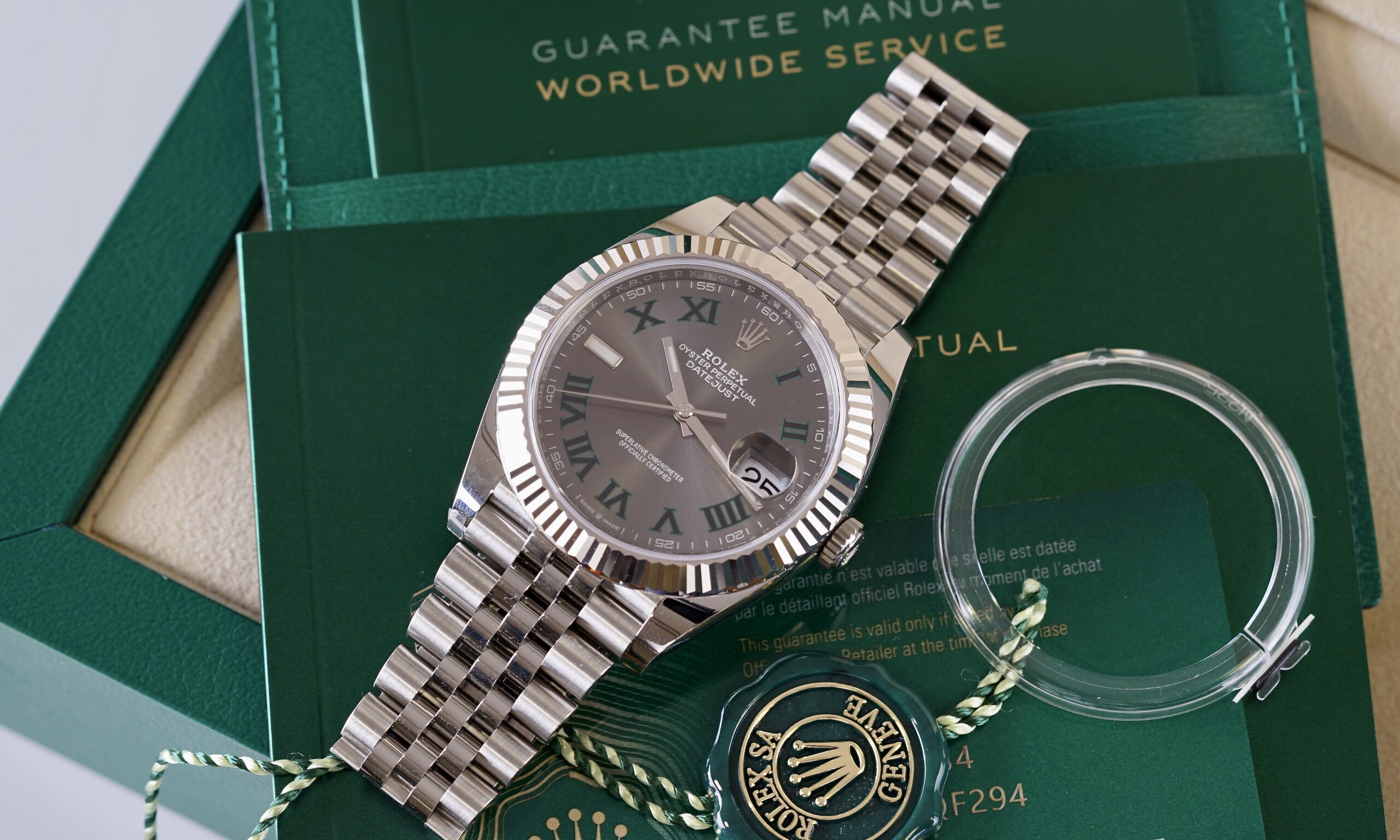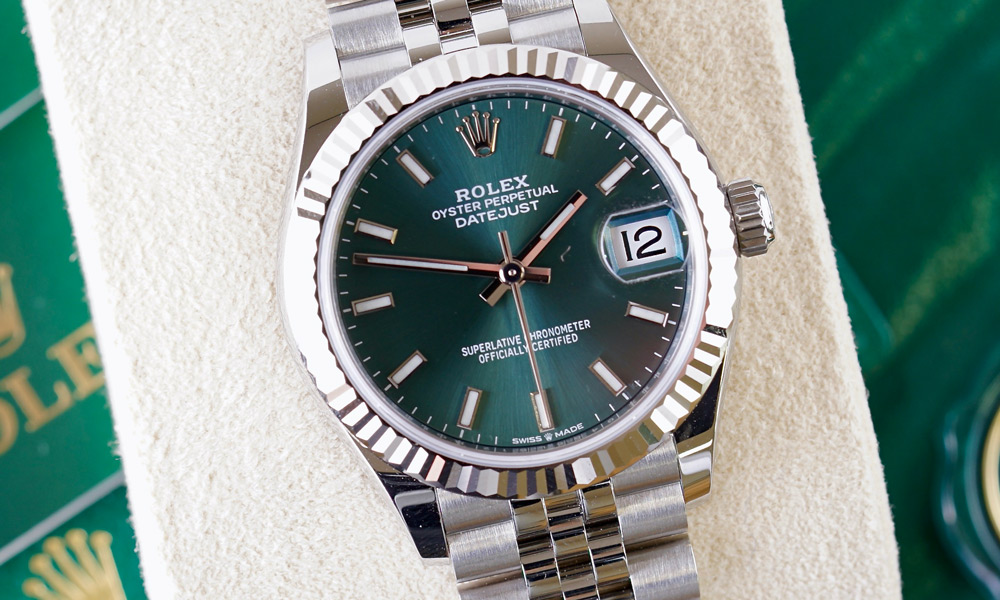The history of the Rolex Datejust
Of all the watches that come to mind, the Rolex Datejust is one of the most classic, innovative watches in history who’s continual innovations have pushed the envelope in the watchmaking game. To truly understand how impactful the Datejust has been on how we design watches now, we must go through the history of its creation and take note of all the changes the creators have made over time. Rolex created many new alterations that were the first of its kind. While the Datejust is not the flashiest nor the most expensive, it has been the heart of Rolex since its inception.
The Beginnings of Datejust
In celebration of their 40th anniversary, Rolex released the Datejust in 1945. The Datejust stood out from other watches by being the first self-winding, water-resistant watch with the date being displayed on the dial. The date would automatically change at midnight, each night, without the need of the wearer having to remember. For that time, having a self-winding watch was a luxury. Rolex was known for creating watches connected to a specific activity as their Submariner was built for Scuba divers and their Daytona was made for race car drivers. The Datejust didn’t fit into that box. It was so elegant that it stood the test of time and could easily be worn every day.
On the Datejust’s first release, it was only available in 18-karat yellow gold. It was also fitted with a new style of bracelet called “Jubilee”, a 5-piece metal bracelet that has now become a signature option for many Rolex watches over time. Jubilee was also the name that the Datejust was originally released under. They designed the Datejust with a water-resistant Oyster case with a fluted bezel truly making this design exquisite and functional.
The ‘50’s: A Time for Innovation
By the beginning of the ’50s, the name Datejust was stamped on the dial, and the form of the watch hadn’t gone through any major changes. But 1954 brought the first revision to the Datejust design with the new Cyclops magnifying lens, which sits on top of the date window. The magnifying lens gives an increase of 2.5x, being very beneficial to the wearer. This is why the Cyclops lens has become the standard with the Datejust design since this day. Cyclops lenses have also become the standard with other Rolex watch designs like the Skydweller, Submariner, GMT, and Yacht-Master.
In 1955, Rolex unveiled a special edition model called the Turn-O-Graph, also nicknamed the Thunderbird. United States Air Force pilots received the Thunderbird as a gift when they returned home from combat. They made another revision in 1957, this one being a more technical update. There was the addition of the Caliber 1065 movement, which allowed for a smaller, more efficient caliber. This idea eliminated the need for a case back and made it easier to streamline the design. Rolex was also able to release a version of the Datejust for women. The ‘50’s also brought with it the stainless steel and two-toned sets so customers had more than just the gold to work with.
Faster Calibers and the Quartz Crisis
With 1965 bringing the Caliber 1570, Rolex decided to take it a step further in 1977 with the Caliber 3035. This feature gave the model a higher frequency, boasting over 28,000 beats per hour compared to 20,000 beats per hour. Users were also able to independently change the date without adjusting the hand’s display at the same time. Around this time is when Rolex also replaced the “pie pan” style dial with a surface that is completely flat.
During the ’70s, watchmakers began moving from mechanical watches to quartz watches, which later impacted the Swiss watchmaking industry who chose to stick with traditional watchmaking methods. Rolex, on the other hand, decided to introduce to the world the Datejust OysterQuartz collection. Quartz provides for a faster and more efficient watch utilizing a battery as a power source that sends an electrical current through a crystal.
Rolex introduced the caliber 3135 in the late 80s. Although it has the same speed as the Caliber 3035, it comes with the addition of the scratch-resistant, synthetic sapphire crystal. This item replaces the acrylic and makes for a slightly slimmer watch. This change has carried on to how Rolex manufactures their watches today to allow for a more sleek look.

(Rolex Oyster Perpetual Datejust 16220 Tapestry Dial)
Datejust II and Beyond
The Datejust didn’t receive another major update until 2009, over 65 years. While still respecting the traditional style that made the Datejust such a timeless design, Rolex gave it a couple of modern updates. The Datejust II was more sporty than the original and had an Oyster bracelet as well as a lume on the dial to make things easier to read. It was also a larger size than the original. This new design also showcased Rolex’s Twinlock Winding Crown, which along with the Oyster case, increase the watch’s water-resistance capability.
The new Caliber 3135 provided Parachrom hairspring and Paraflex shock absorbers as well as boasting the COSC certification. By 2016, Rolex retired the Datejust II and released the Datejust 41. Just like the Datejust II, the Datejust 41 was 41 mm. With a better movement and a few aesthetic additions, the Datejust 41 had a better record than the Datejust II.

(Rolex Oyster Perpetual Datejust Wimbledon 126334)
The Right Datejust for You
With so many styles to choose from, it can be hard to decide which Datejust would work best for you and your personal style. Whether you go traditional or want to try something new with the Datejust 41, you are guaranteed to find a watch that is elegant, efficient, and classic. If you prefer a smaller watch, look through the range of Datejust watches dating before 2009. Some people do prefer the bigger look of the Datejust II and Datejust 41. While other people stick with the classic, 36 mm look. No matter what size, the Datejust is a watch that is perfect for everyday wear or if you want to add something special for a night out.












